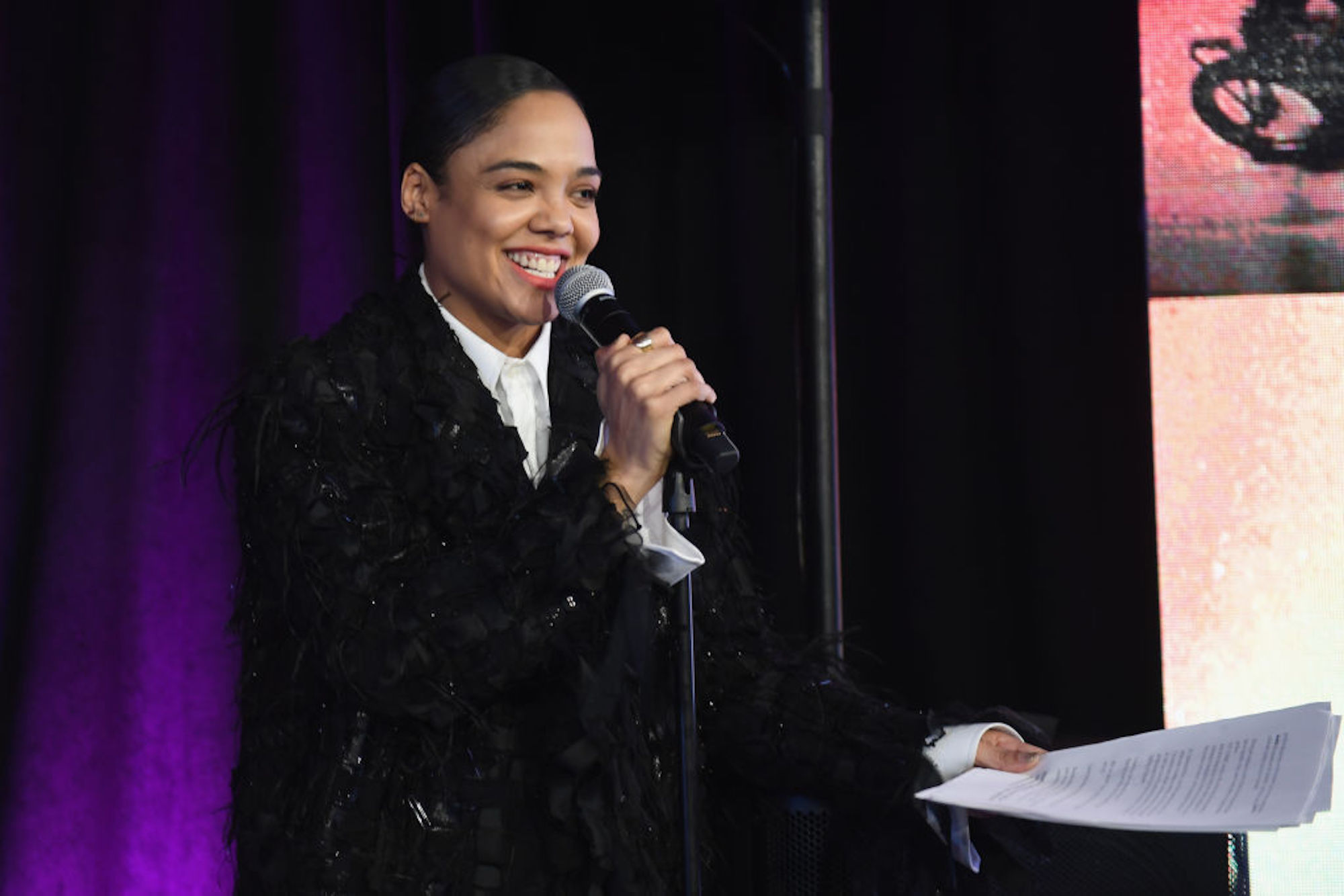Tessa Thompson and Other Stars Are Taking Hollywood’s Gender Gap into Their Own Hands

Credit to Author: Taylor Hosking| Date: Tue, 29 Jan 2019 13:00:29 +0000
The Oscars may have set a disappointing tone for the new year by not nominating any women for Best Director. But over the weekend at the Sundance Film Festival, actors like Tessa Thompson, Jordan Peele, and Reese Witherspoon took matters into their own hands, pledging support for a new initiative. The Time’s Up 4% Director Challenge, issued Friday via a tweet by the Annenberg Inclusion Initiative in conjunction with Time’s Up, encourages participants to work with at least one female director on a feature film within the next 18 months.
The challenge gets its name from a stat released by the Annenberg Inclusion Initiative—a think tank out of USC’s Annenberg School of Communications and Journalism that studies diversity and inclusion in the entertainment industry—which notes that only 4 percent of the 1,200 top earning films released between 2007 and 2018 were directed by women.
With this new effort, the responsibility for addressing diversity in directing shifts with greater weight to actors, producers, and the many others essential to making a movie, setting actual goals for the many gatekeepers within the industry to be held accountable to.
When the challenge was first announced Friday, industry insiders like comedian Amy Schumer andCrazy Rich Asians executive producer Nina Jacobson had already signed on. Then Tessa Thompson announced her support the same day, adding that she’s also doubling the number of journalists of color she’ll speak to for her upcoming films. And a number of other followed suit online like Olivia Wilde, Rosie Perez, Jennifer Lopez, Mark Duplass, Paul Feig, and many more.
The challenge also comes weeks after Regina King made an ambitious personal pledge to ensure that everything she produces in the next two years employs 50 percent women. “And I challenge everyone out there who is in a position of power, in all industries, I challenge you to challenge yourself and stand with us in solidarity and do the same,” she said in her Golden Globes acceptance speech for Best Supporting Actress in a Motion Picture.
A-list actors pledging to be in one woman-directed feature is nothing to shirk at, especially considering one or two films may be all they have time to shoot in 18 months. Unless they’re one of those new-project-every-week actors like Kevin Hart or Dwayne “The Rock” Johnson (who probably have access to Hermione Granger’s time travel necklace if we’re being real).
Hollywood has been having this conversation for a while now, and a study by San Diego State University’s Center for the Study of Women in Television and Film found that when films are directed by a woman, it leads to gender parity in the rest of the roles in production. But until recently, the people taking the most pubic and active roles in creating opportunities for female directors were largely other female directors. Ava Duvernay handing over her acclaimed drama Queen Sugar to a selection of 25 emerging female directors sent a clear message that they’re not too hard to find. Lena Waithe and Shonda Rhimes have also made it their job to hire and mentor female writers and directors, even opening the floor for anyone to submit scripts for consideration. Others, like Tina Fey to Issa Rae, have been outspoken about hiring more women on their own projects as well.
Hollywood has been slow to react thus far when the myth that female-directed films don’t do well at the box office is proven wrong over and over again. Big-budget movies helmed by women, likeWonder Woman (Patty Jenkins, 2017) and Frozen (Jennifer Lee, 2013) made killings, but studios are still lacking in female representation behind the camera. And just last month a new analysis from Creative Arts Agency and shift7 had to set the record straight, showing films with female leads have been earning more than films with male leads in their budget range for the past several years (2014-2017) despite industry opinions to the contrary.
The 4% Director Challenge not only spreads the responsibility to others outside of hiring positions, it’s attempting to create new avenues for accountability. If producers are hesitant to hire women directors, having a star with box office cred like Tessa Thompson or Jennifer Lopez put their foot down over who they work with seems to be a sure way to shake things up. Still, whether it’s the definitive answer to ensuring greater inclusivity is still to be determined.
After Regina King explained her Golden Globes pledge to the New York Times, for example, she said, “I don’t know that there is one clear answer [about how to get more women in film]. The studios do have a lot of power to employ more. What I do know is that if we had the money ourselves, if we had that inheritance, then yeah, I think that this wouldn’t be the conversation.” Statements like that show how difficult it is to tackle systematically when there’s no one specific to hold accountable. It’s an overall cultural shift that’s needed, and people have to start somewhere.
The challenge signals a motion of solidarity that will hopefully send large waves through the industry. If people can’t change the hearts and minds of those leading the studios, they can at least put their own foot down and show their collective strength.
Sign up for our newsletter to get the best of VICE delivered to your inbox daily.
Follow Taylor Hosking on Twitter and Instagram.
This article originally appeared on VICE US.